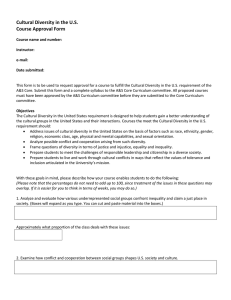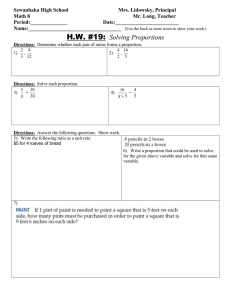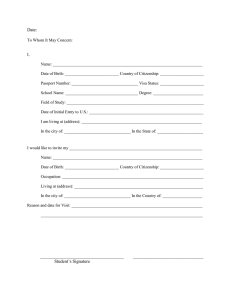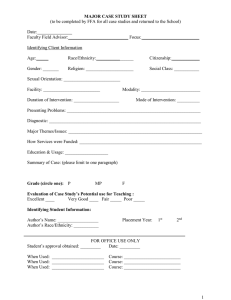Global Citizenship Course Approval Form
advertisement
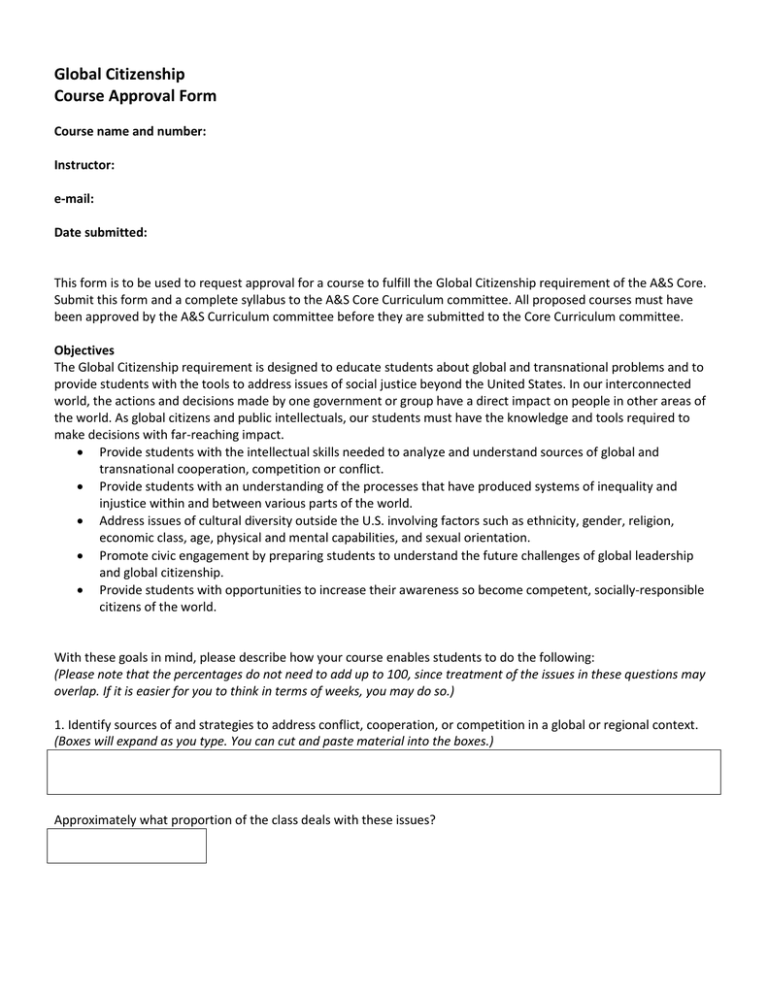
Global Citizenship Course Approval Form Course name and number: Instructor: e-mail: Date submitted: This form is to be used to request approval for a course to fulfill the Global Citizenship requirement of the A&S Core. Submit this form and a complete syllabus to the A&S Core Curriculum committee. All proposed courses must have been approved by the A&S Curriculum committee before they are submitted to the Core Curriculum committee. Objectives The Global Citizenship requirement is designed to educate students about global and transnational problems and to provide students with the tools to address issues of social justice beyond the United States. In our interconnected world, the actions and decisions made by one government or group have a direct impact on people in other areas of the world. As global citizens and public intellectuals, our students must have the knowledge and tools required to make decisions with far-reaching impact. Provide students with the intellectual skills needed to analyze and understand sources of global and transnational cooperation, competition or conflict. Provide students with an understanding of the processes that have produced systems of inequality and injustice within and between various parts of the world. Address issues of cultural diversity outside the U.S. involving factors such as ethnicity, gender, religion, economic class, age, physical and mental capabilities, and sexual orientation. Promote civic engagement by preparing students to understand the future challenges of global leadership and global citizenship. Provide students with opportunities to increase their awareness so become competent, socially-responsible citizens of the world. With these goals in mind, please describe how your course enables students to do the following: (Please note that the percentages do not need to add up to 100, since treatment of the issues in these questions may overlap. If it is easier for you to think in terms of weeks, you may do so.) 1. Identify sources of and strategies to address conflict, cooperation, or competition in a global or regional context. (Boxes will expand as you type. You can cut and paste material into the boxes.) Approximately what proportion of the class deals with these issues? 2. Investigate how people and nations confront inequality and claim a just place, whether in their own societies or in the world. Approximately what proportion of the class deals with these issues: 3. Identify how perceptions of “otherness” impact leaders, communities, and community-building in areas beyond the U.S., through the examination of such factors as race, ethnicity, gender, religion, economic class, age, physical and mental capability, and sexual orientation. Approximately what proportion of the class deals with these issues: 4. Understand the impact of their lives and choices on global and international issues. Approximately what proportion of the class deals with these issues: 5. Understand how their values are related to those of other people in the world. Approximately what proportion of the class deals with these issues:
